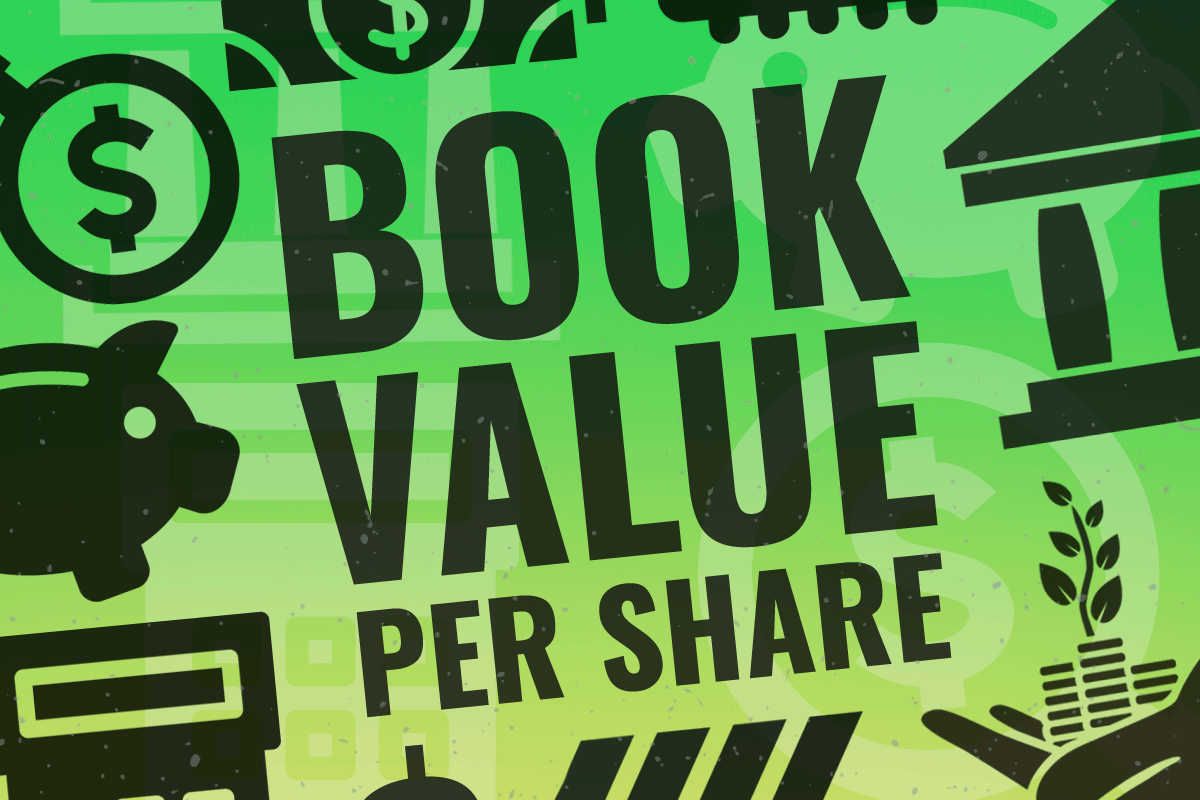Anyone who has set themselves the goal of making money on the stock market should know the meaning of the term “book value per share”.
Smart market experts are always on the hunt for the next Amazon
(AMZN) – Get report from Amazon.com, Inc or apple
(AAPL) – Get Apple Inc. report before they show up on stock market radar and attract too much investor attention. These stocks, when they were in their infancy, gave savvy investors exactly what they’re looking for in a stock with potential — largely undervalued stocks.
A proven way to identify grossly undervalued stocks is to determine their book value per share.
Book value is a key factor in a healthy but undervalued stock. Publicly traded companies always include important financial factors such as earnings, liabilities and assets in their public reports. For better transparency, companies break down these factors in more detail so that interested investors can better assess the company’s stock.
Book value per share is one way for investors to do this — particularly value investors looking for a good stock at a discount.
Let’s kick some hoops on book value per share, see how it works, and examine what value it brings to investors.
What is the book value per share?
Simply put, book value per share defines the book value (i.e. book value) of one share of publicly traded stocks.
Book value per share is also defined as a company’s nearest asset and is essentially the total assets of a company, excluding a company’s assets and liabilities.
When the book value per share is high compared to a company’s stock price, the company’s shares are considered undervalued.
In other words, book value per share compares the total equity in a share to the number of shares outstanding. Analysts who do this regularly look to see if the market value per share is below book value per share.
If that’s the case, a company’s stock may well be undervalued.
Investors wishing to apply book value per share to a stock should look at a company’s balance sheet, which contains the necessary components to determine book value, such as: B. the total asset value and the cost of an asset. In the balance sheet you will also find the accumulated depreciation of the company’s assets, which helps to get the most accurate result when it comes to the book value per share.
Calculating book value per share isn’t necessarily complicated.
Basically, you subtract a company’s preferred stock from its equity and divide that total by the average number of shares outstanding.
Here’s the book value per share formula from the folks at YCharts.com:
Book value per share = (shareholders’ equity – preferred shares) / total number of common shares outstanding
For a more real example of book value per share in action, we turn to AccountingTools.com, which offers this scenario:
XYZ Stock has $15 million in equity, $3 million in preferred stock and an average of 2 million shares outstanding during the measurement period.
The calculation of the book value per share is:
$15 million equity – $3 million preferred stock ÷ 2 million average shares outstanding
= $6 book value per share
Three things to know about book value per share
While it’s important to understand the definition and calculation of book value per share, it’s also important to understand why the stock valuation model is used and what it means for you as an investor.
Here’s a closer look:
An indispensable tool for value investors. Book value per share is most commonly used by so-called value investors, championed by Warren Buffett. These investors are always looking for a discount, and book value per share gives them a useful tool to buy a stock at real value.
For example, when a stock is trading below its book value, that’s the green light for value investors, who see this scenario as an opportunity to buy stock at a price that’s actually below the stock’s value.
Book value is not the same as market value. While book value per share is a good way to value a stock, it is more of an accounting tool and does not necessarily reflect the true market value of a publicly traded company – companies have different accounting models for determining book value and not all models are created equal depend on the discretion of C-level management.
Book value and market value can let an investor know if Wall Street is bulls or bears. Basically, when a company’s market value is significantly higher than its book value, it is a bull market scenario. If the opposite is true and book value and market value are closer together, then the market is more likely to be in a bear market scenario.
Book value per share is a fairly conservative way of measuring a stock’s value. A company’s stripped down book value is the value of the company that the shareholders will own when the company’s assets are sold and all of the company’s debts are settled.
This definition represents a conservative, even conservative measure of a stock’s potential value.
This is especially true when compared to other stock valuation models, such as B. A revenue-based calculation where future business growth and profit projections need to be added. However, conservative stock valuation models like book value are probably a better measure of a stock’s potential value, since earnings-based models are less robust with all the future growth and earnings projections needed to make a definitive judgement.
Book value per share is very useful for investors to get a real picture of a company’s equity value. Any security trading for less than its tangible book value is manna from heaven for value investors, underscoring the necessity and importance of book value per share.
If you’re looking to get a better handle on a company’s value based on its internal financial metrics, book value is a good—but not the only—measure.

